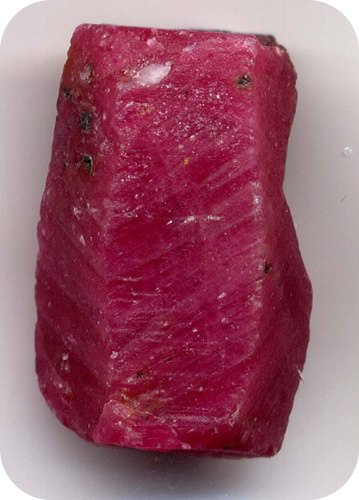Physical Properties of Ionic Compounds Study Guide
INTRODUCTION
Crystals can be discovered in chemical deposits all over the world. The ruby crystal seen here is incredibly precious, both for its aesthetic value and application in lasers. Crystals are thought to have magical properties by some individuals 😮. Others believe the “magic” lies in the crystal’s structural form, in which the cations and anions stack up in a predictable pattern 🤓 These crystals are made up of ionic compounds. Let’s learn about these compounds and crystals in detail.
WHAT ARE IONIC COMPOUNDS?
Ionic compounds are compounds made up entirely of ions. Ions are molecules that lose or gain electrons, and they will also have an opposite charge. Nonmetals acquire negative charge by losing electrons and forming anions, whereas metals gain positive charge by losing electrons and forming cations. Cations tend to get a positive charge, whereas anions have a negative charge. Metals and non-metals commonly form ionic connections.
CRYSTALS
Instead of amorphous solids, ionic compounds produce crystal lattices. Though molecular substances may form crystals, they generally do so in different shapes than ionic compounds, and molecular crystals are generally smoother than crystalline materials. An ionic crystal is a regular pattern at the atomic scale, with the cation and anion cycling and generating a three-dimensional framework based on the smaller ion uniformly filling up the spaces between the bigger ions.
PROPERTIES
- They have very high melting and boiling points. High temperatures are demanded to counteract the affinity between oppositely charged ions in ionic compounds.
- They’re brittle and rigid.
- Ionic crystals are difficult to distinguish because the positive and negative ions are firmly attached.
- When mixed with water, they conduct electricity.
- The dispersed ions in ionic compounds mixed with water can carry electric current through the mixture.
USES OF IONIC COMPOUNDS
Table salt, often known as sodium chloride, is an ionic substance, and the melting point of salt is very high. While a salt crystal is an electrical insulator, saline fluids (salt mixed in water) do not.
Other common uses of ionic compounds are shown below:
CONCLUSION:
- Ionic compounds are made up of ions with opposing charges kept together by ionic bonds.
- Ionic compounds have a total net neutral charge because the opposite charges balance each other out.
- Metals transmit valence electrons to non-metals to generate ionic compounds.
- Crystals of ionic compounds have high melting and boiling points.
FAQs:
1. Do ionic compounds make crystals?
Ionic chemicals form crystals rather than molecules. Many consecutive positive and negative ions are linked in a matrix to form a crystal.
2. Why do ionic compounds form hard crystals?
Crystal lattices having oppositely charged ions make up the crystals of electrovalent substances. A certain number of anions encircle each cation and vice versa. Because of the strong electrostatic interaction between these oppositely charged ions, ionic compounds form rigid crystals.
3. Why are ionic compounds conductive?
Since their ions can travel from point A to point B, ionic substances conduct electricity when molten (fluid) or in an aqueous phase (dispersed in water). Because their ions are maintained in fixed places and cannot migrate, ionic substances never conduct electricity when solidified.
4. Why are ionic compounds more conductive than covalent?
Compared to covalent compounds, ionic compounds are generated by intense electrostatic attraction between ions, resulting in greater melting temperatures and high conductivity.
We hope you enjoyed studying this lesson and learned something cool about the Physical Properties of Ionic Compounds! Join our Discord community to get any questions you may have answered and to engage with other students just like you! Don’t forget to download our App to experience our fun VR classrooms – we promise it makes studying much more fun! 😎
SOURCES:
- Ionic Compound. https://www.ck12.org/c/chemistry/physical-properties-of-ionic-compounds/lesson/Ionic-Compounds-MS-PS/ Accessed 18 February 2022
- Ionic Compound Properties, Explained. https://www.thoughtco.com/ionic-compound-properties-608497 Accessed 18 February 2022
- Ionic Compounds. https://www.toppr.com/guides/chemistry/metals-and-nonmetals/ionic-compounds/ Accessed 18 February 2022



